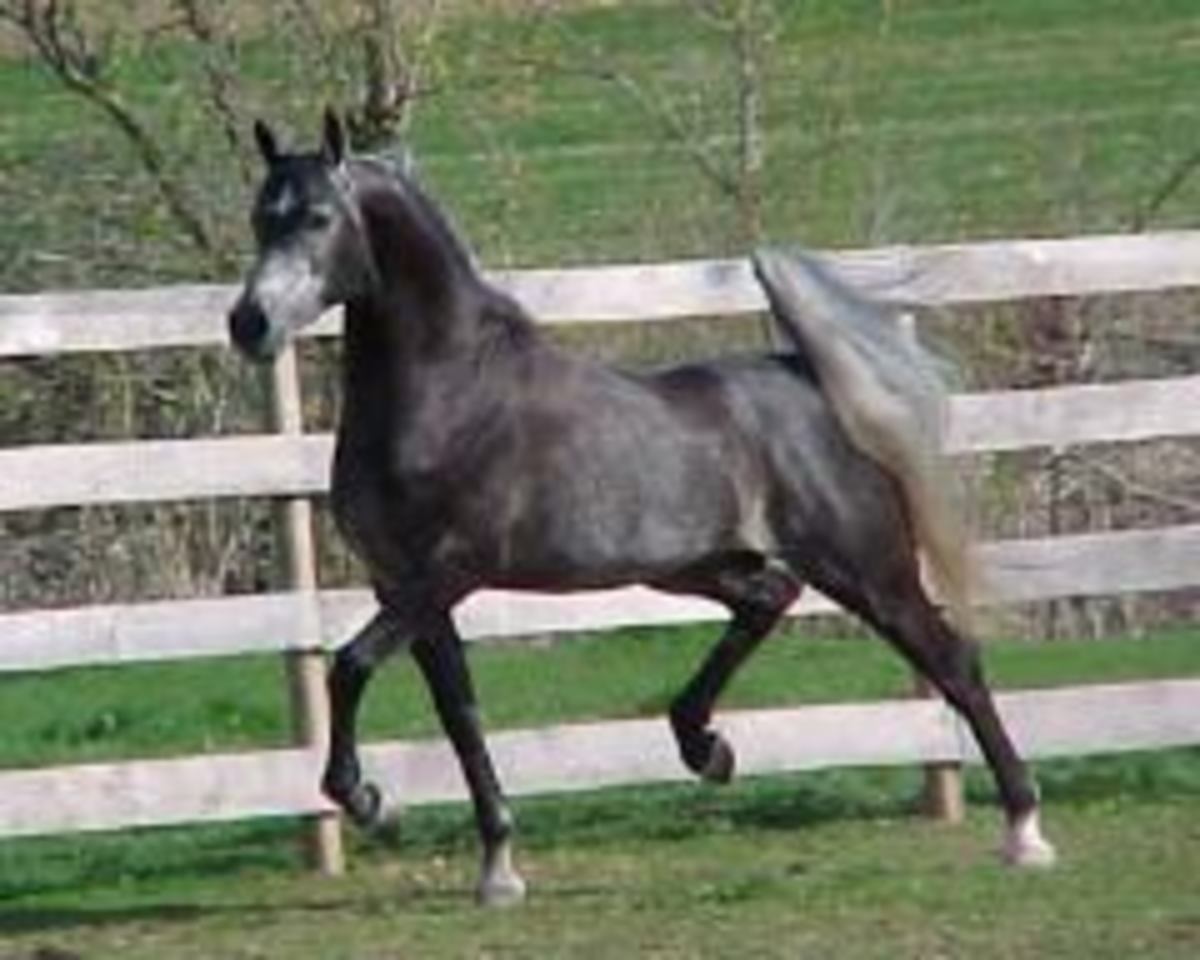Home > Horse Care > Breeding > Breed Profile: Arabian
Breed Profile: Arabian
- July 25, 2019
- ⎯ Equus
Origins
The Arabian horse originated in the desert lands of what is now Saudi Arabia. They were prized by the nomadic Bedouin tribes who bred and raised them. Although early written records are scarce, one Arab historian wrote an account in AD 786 which attempted to record the history and pedigrees of the Arabian horse, going back to 3000 BC. While the account may not be strictly factual, it underlines the importance of the Arabian breed and the strict breeding practices of the Bedouin to keep the bloodlines pure.
The history of the Arabian is steeped in myth and legend. According to the Bedouins, God created the Arabian horse from the South Wind, saying “I call you Horse; I make you Arabian and I give you the chestnut color of the ant; I have hung happiness from the forelock which hangs between your eyes; you shall be the Lord of the other animals. Men shall follow you wherever you go; you shall be as good for flight as for pursuit; riches shall be on your back and fortune shall come through your meditation”.
In the 18th and 19th centuries, the great studs of Europe, such as those in Germany, Poland, France and Hungary, gave an important boost to the development of the Arabian horse. In the 1870’s, the Crabbet Stud in England was founded and Crabbet Arabians became the foundation for the Arabian breed in the UK and also the US, Australia and South Africa.
Because of the genetic purity and prepotency of the Arabian, it has been used for centuries to upgrade and refine many other breeds. The Arabian horse was pivotal in the development of the Thoroughbred in the 18th century and three horses, the Byerley Turk, the Godolphin Arabian and the Darley Arabian are accepted as the founding sires of the Thoroughbred.
Appearance

LH Bel Ami, Arabian stallion owned by Desert Visions Ltd. Photograph used with permission.
Arabian horses stand at an average height of 14.3 hands high. They are compact-bodied animals with long, clean legs and a long, level croup. The hair coat is fine and silky, as is the mane and tail.
The most visible characteristic of the Arabian is the dished, or concave, profile to the face. They have small muzzles with large nostrils, large eyes and small ears which curve inward at the tips.
They are anatomically different from all other breeds of horse in that they have one less rib (17, as opposed to the usual 18), one less lumbar vertebra and one less tail bone than other horses.
Uses
Arabian horses have tremendous stamina and endurance and nowadays this has made them a very popular mount for endurance and long distance riders. They are also popular as pleasure mounts, and compete in Western pleasure classes under Western tack, as well as Saddle seat classes in the US. In England they are more of a general purpose horse and can be seen anywhere from the gymkhana ring to the hunting field.
They are also used extensively as crosses with other breeds and continue to be an influence today.
Bibliography:
The Encyclopedia of the Horse – Elwyn Hartley-Edwards. ISBN 1-56458-614-6





